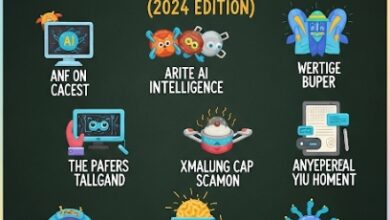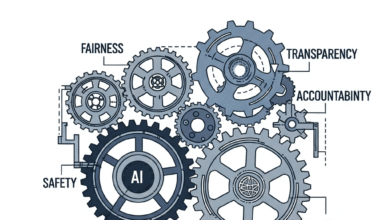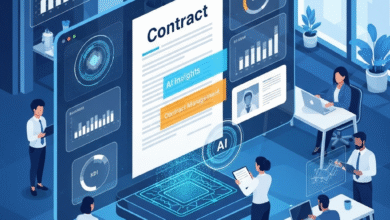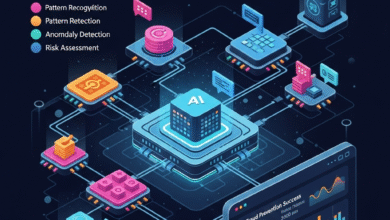Leading Social Impact with Artificial Intelligence
Your 2025 Blueprint for Purpose-Driven Digital Business

Leading Social Impact with Artificial Intelligence : Your 2025 Blueprint for Purpose-Driven Digital Business
The digital business landscape is undergoing a profound transformation. As we approach 2025, artificial intelligence is no longer just an efficiency tool—it’s becoming humanity’s most powerful ally in solving global challenges. Leading social impact with artificial intelligence represents the next competitive frontier where purpose and profit converge. Here’s how visionary businesses will drive meaningful change while thriving commercially.
Why Social Impact AI is Non-Negotiable in 2025
-
The Stakeholder Revolution
-
83% of consumers prefer brands with ethical standpoints (Edelman Trust Barometer)
-
76% of Gen Z employees prioritize purpose over salary (Deloitte Global Survey)
-
Impact-driven companies outperform peers by 4.3% in annual returns (Harvard Business Review)
-
-
AI’s Maturity Leap
Advanced capabilities like predictive analytics, natural language processing, and computer vision now enable:-
Real-time social issue diagnosis
-
Hyper-personalized intervention scaling
-
Cross-sector impact forecasting
-
The 4 Pillars of Impact-Driven AI Strategy
Pillar 1: Ethical AI Foundation
Build trust through radical responsibility:
-
Bias Auditing: Implement continuous algorithmic fairness testing using tools like IBM’s AI Fairness 360
-
Explainable AI (XAI): Adopt interpretable models with tools like LIME or SHAP
-
Privacy Safeguards: Utilize federated learning and differential privacy techniques
-
Impact Advisory Boards: Include ethicists, community leaders, and civil society representatives
Pillar 2: Precision Impact Targeting
Focus AI where it matters most:
| Sector | AI Solutions | 2025 Impact Metrics |
|---|---|---|
| Healthcare | AI diagnostic tools for remote areas | 50M+ patients served in medical deserts |
| Education | Adaptive learning platforms | 30% improvement in marginalized student outcomes |
| Environment | Predictive deforestation models | 200M+ trees preserved through early intervention |
| Financial Inclusion | Alternative credit scoring | $15B in capital unlocked for underserved entrepreneurs |
Pillar 3: Democratized Access Architecture
Break down barriers to impact:
-
Open Impact AI: Release social-good algorithms as open source (e.g., Google’s TensorFlow Hub)
-
Low-Code Platforms: Enable NGOs with tools like Microsoft’s AI for Good Suite
-
Community Co-Creation: Partner with local organizations through platforms like Omdena
-
Digital Literacy Programs: Bridge the understanding gap with AI explainer kits
Pillar 4: Transparent Impact Accounting
Measure what truly matters:
-
Adopt IRIS+ impact metrics (Global Impact Investing Network)
-
Implement blockchain-secured impact ledgers
-
Pursue B Corp certification with AI impact addendums
-
Issue annual AI Impact Transparency Reports
2025 Implementation Roadmap
-
Impact Integration Sprint (Q1 2025)
-
Map SDGs to core business capabilities
-
Conduct AI ethics gap analysis
-
Establish cross-functional impact task force
-
-
Pilot Launchpad (Q2-Q3 2025)
-
Select 3 high-impact use cases
-
Partner with local NGOs for ground truthing
-
Develop minimum viable impact products
-
-
Scale with Purpose (Q4 2025+)
-
Integrate impact metrics into executive KPIs
-
Launch AI impact investment fund
-
Build industry coalitions for systemic change
-
Q&A: Leading Social Impact with AI
Q: How can small businesses afford impact-focused AI?
A: Leverage these accessible options:
-
Free tiers of Google’s AI for Social Good toolkit
-
Government grants like NSF’s Responsible AI program
-
Shared-value partnerships with larger corporations
-
Open-source models from Hugging Face’s social impact hub
Q: How do we prevent “impact washing”?
A: Validate authenticity through:
-
Third-party verification from firms like BlueMark
-
Concrete impact metrics (e.g., “reduced water usage by X% in Y community”)
-
Community testimonials and case studies
-
Transparent algorithmic documentation
Q: What are emerging AI impact technologies for 2025?
A: Watch these game-changers:
-
Climate AI: Dynamic carbon footprint simulators (e.g., ClimateAI)
-
Health Equity NLP: Bias-free diagnostic language models
-
Poverty Prediction Platforms: AI-powered vulnerability mapping (e.g., Atlas AI)
-
Ethical Supply Chain Ledgers: Blockchain-AI fusion for fair trade
Q: How to balance profit and purpose with AI?
A: Implement hybrid value models:
-
Tiered pricing (commercial users subsidize social impact users)
-
Impact-as-a-Service revenue streams
-
SDG-aligned venture capital partnerships
-
“Buy One, Fund Impact” consumer programs
2025 Impact Accelerators
-
Regulatory Catalysts
-
EU’s AI Act impact assessments (mandatory starting 2025)
-
California’s Social Impact AI Tax Credits
-
UN’s AI for SDGs Certification Program
-
-
Talent Revolution
-
Rise of Chief Impact Officers in 60% of tech firms
-
Impact Engineering specialization programs at top universities
-
AI ethicist roles becoming standard in product teams
-
-
Investor Shift
-
45% of VC funds now requiring AI impact clauses
-
ESG 3.0 standards incorporating algorithmic accountability
-
Impact-weighted accounting becoming GAAP-adjacent
-
Getting Started: Your First 90 Days
-
Run an AI Impact Audit: Use MIT’s Moral Machine framework
-
Prioritize 1 SDG Alignment: Match to core business strengths
-
Launch Micro-Pilot: Start with internal ops (e.g., bias-free hiring AI)
-
Join Consortiums: UN Global Compact AI Action Group or OpenAI’s Impact Network
“The companies that thrive in 2025 won’t just use AI—they’ll harness it to rewrite our global future. Impact isn’t a cost center; it’s the ultimate growth engine.” — Responsible AI Institute, 2024 Trend Report
The Call to Action
Leading social impact with artificial intelligence is no longer optional—it’s the price of entry for relevance in 2025. The most successful digital businesses will be those that:
-
Embed impact into their AI DNA
-
Measure success in societal outcomes alongside revenue
-
Build transparent, accountable systems
-
Empower communities as co-creators
The future belongs to algorithms with altruism, data with dignity, and technology with tangible purpose. Your transformation begins now—which global challenge will your AI solve first?





